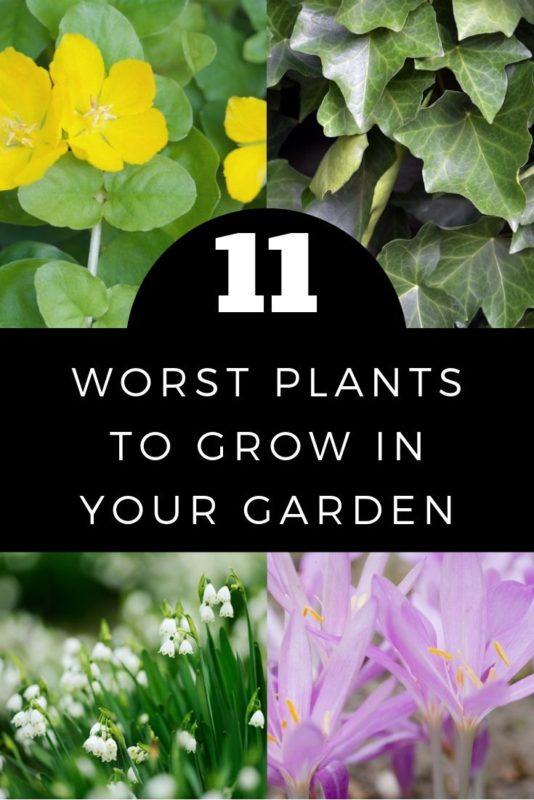
In the effort to ensure your summer of gardening is as carefree as possible, we’ve curated a list of decorative plants that really aren’t worth all the trouble.
If you don’t want to worry about plant toxicity, garden bullies, or demanding divas, then you definitely want to stay away from these lovely, yet time-consuming, cultivars:
Beautiful & Deadly
Since plants have no claws or teeth to protect themselves from predators, many have evolved with toxic compounds to defend against insects, animals, and humans. Though fatality by plant is exceedingly rare, you may wish to keep these poisonous species far away from kids and pets.
There are way too many potentially harmful plants to list in full here, so see this page for a more complete accounting.
1. Poet’s Narcissus (Narcissus poeticus)
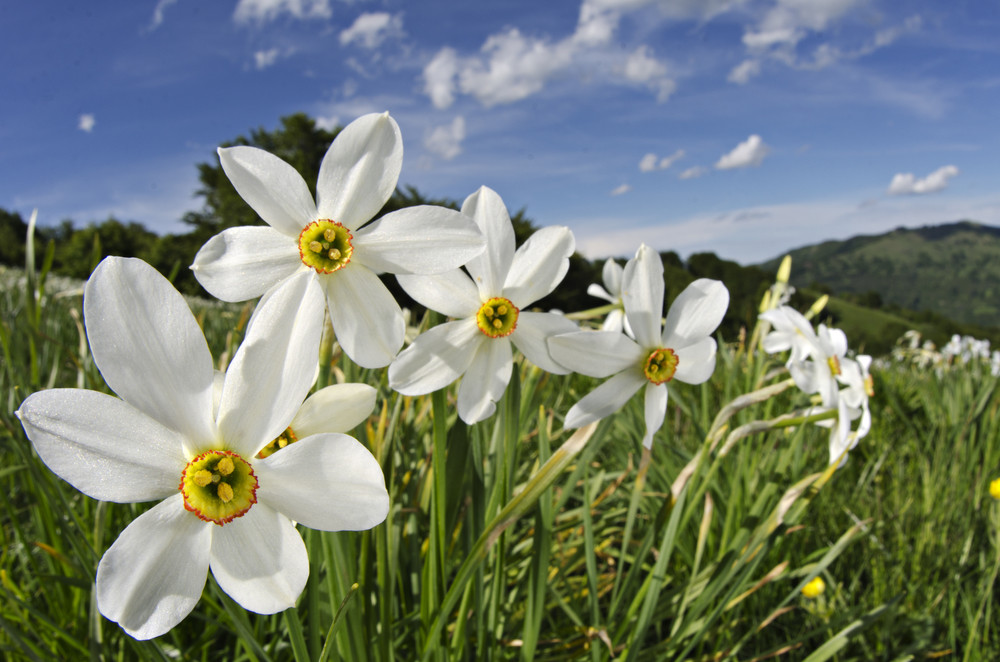
Part of the daffodil family, poet’s narcissus offers a gorgeous display of pure white petals surrounded by a funnel-shaped yellow center that is rimmed with a delicate ridge of red.
Named after the Greek hero Narcissus, whose love of his own beauty brought about his demise, all parts of the poet’s narcissus are toxic, especially the bulbs which can be easily mistaken for onions.
Containing lycorine, eating this plant can cause vomiting, stomach cramps, and in extreme cases, convulsions and cardiac arrhythmias.
It is also highly fragrant and keeping a large quantity of poet’s narcissus in an enclosed space is powerful enough to bring about headaches and nausea.
2. Autumn Crocus (Colchicum autumnale)
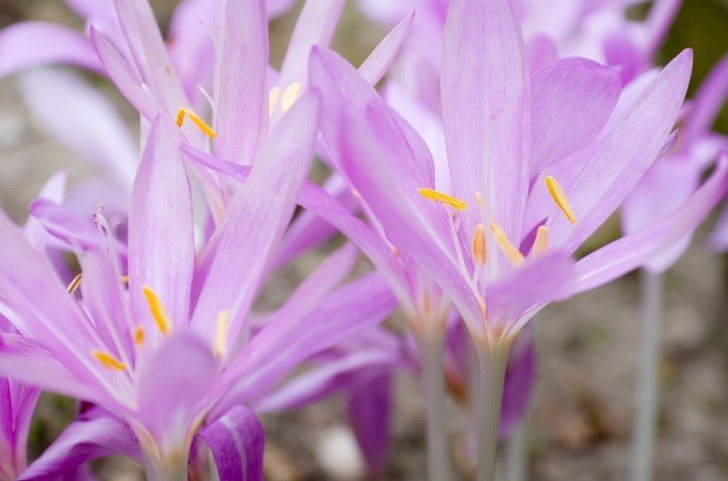
A fall flowering plant, autumn crocus offers showy blooms in hues of pink, purple, white, and blue.
But beware, these lovely autumn flowers contain the alkaloid colchicines.
Though this chemical has been used medicinally to treat gout, atrial fibrillation, and pericarditis, the plant is toxic if eaten, inhaled, or absorbed through the eyes.
With symptoms that are similar to arsenic poisoning, acute exposure is usually felt within two to 24 hours and includes fever, vomiting, diarrhea, abdominal pain, and possibly multiple system organ failure when left untreated.
3. Foxglove (Digitalis purpurea)

Featuring tall spikes with a multitude of bell-shaped purple-pink flowers, each bloom of the foxglove plant has an intriguing smattering of black and white spots on its interior cup.
While it certainly is a fascinating visual piece for the garden, all parts of this plant contain cardiac glycoside, a digitoxin that affects the heart.
If eaten, it causes low pulse rate, nausea, vomiting, and heart contractions that will eventually lead to cardiac arrest.
4. Lily of the Valley (Convallaria majalis)
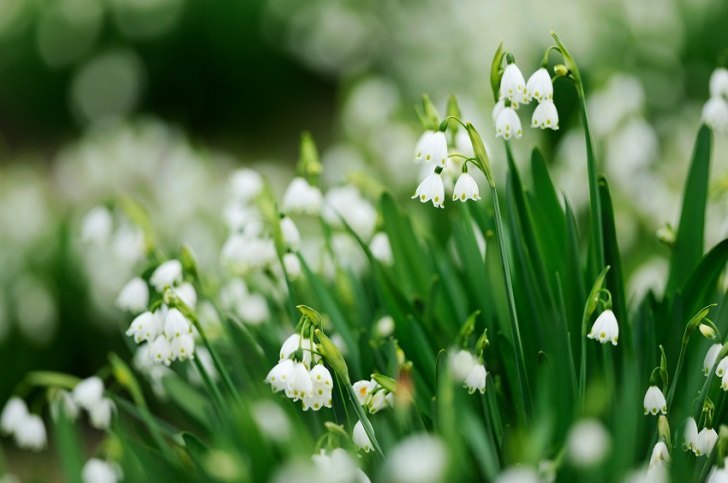
Sweetly scented, lily of the valley has leafy shoots with a delicate cluster of downward-facing white flowers.
This dainty little number is not only extremely toxic, but could easily be classed as an aggressive grower too.
To date, 38 different cardiac glycosides have been identified in lily of the valley and consuming even small amounts can cause abdominal pain, reduced heart rate, skin rashes, and blurred vision.
Lily of the valley also produces small red berries, which are poisonous too, and could be especially tempting to children.
Aggressive Growers
These plants are the veritable bullies of the garden, quickly subduing and crowding out your more bashful botanicals.
If you decide to plant these types of blooms regardless of their aggressive nature, be prepared to snip and pull quite often to keep them under control.
5. English Ivy (Hedera helix)

Considered an invasive species in many parts of the United States, English ivy has even been outright banned in the state of Oregon.
While its clinging vines make for an excellent ground cover or building façade green, using it anywhere else in the backyard can be problematic at the least.
Very difficult to control once it’s established, it spreads so densely that it can choke out other plants and create an “ivy desert” effect, while its penchant for climbing can cause young trees to topple over from its creeping weight.
6. Mint (Mentha spp.)
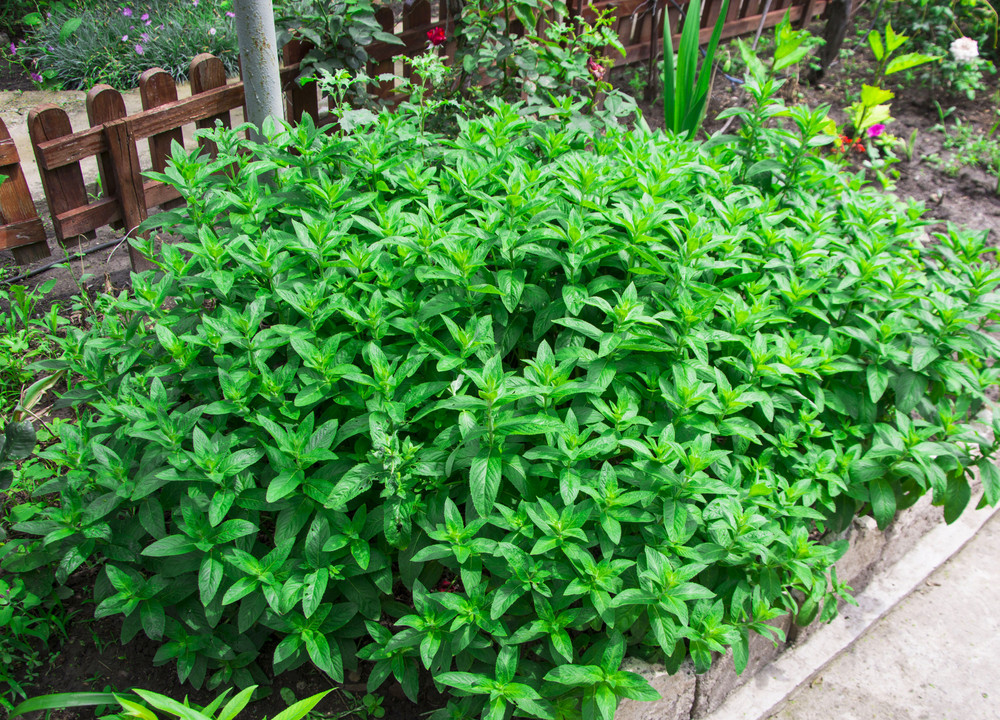
Despite their culinary uses and air freshening aroma, many varieties of mint – including peppermint, spearmint, and catmint – are prolific growers.
Utilizing their twofold spreading technique, mint plants are able to conquer far and wide via underground rhizomes and horizontal runners.
They can quickly take over new terrain so it’s best to grow them in containers and to harvest their leaves frequently to keep them at bay.
7. Bamboo (Bambusoideae)
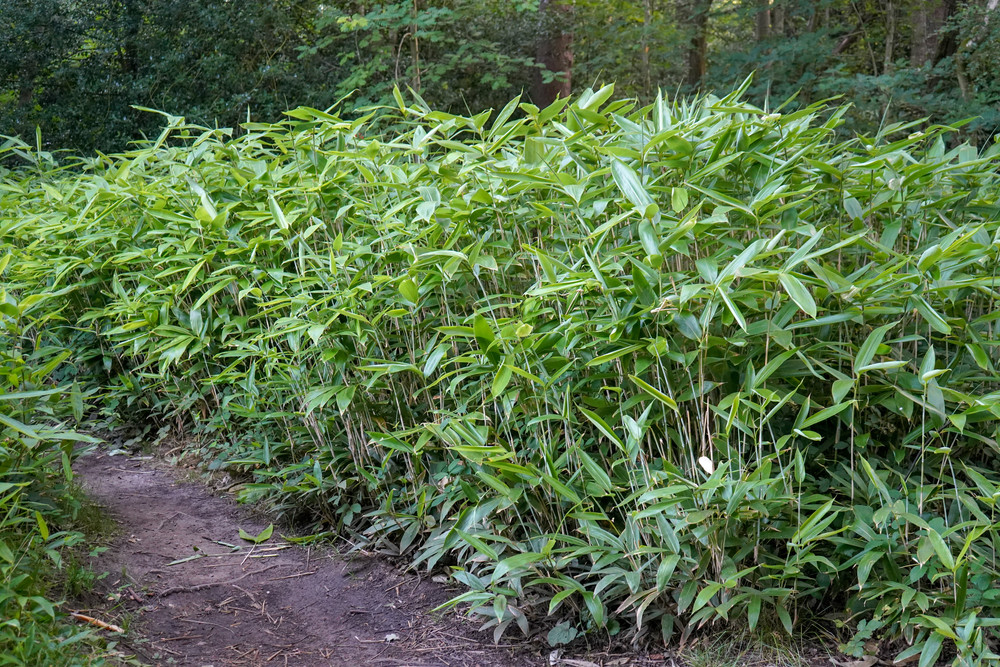
An exotic addition to the backyard landscape, bamboo is among the fastest growing woods in the world.
Producing more oxygen than the average tree, it can also be harvested and cured for a homegrown supply of strong and durable building materials.
Bamboo’s main caveat, however, is its vigor for colonizing new lands – it can (and will) spread beyond your property line and into your neighbor’s yard.
Unthwarted by commercial herbicides, bamboo can be very difficult to cull and may take years to get it under control. Despite all this, bamboo can be successfully contained – here’s how.
8. Creeping Jenny (Lysimachia nummularia)
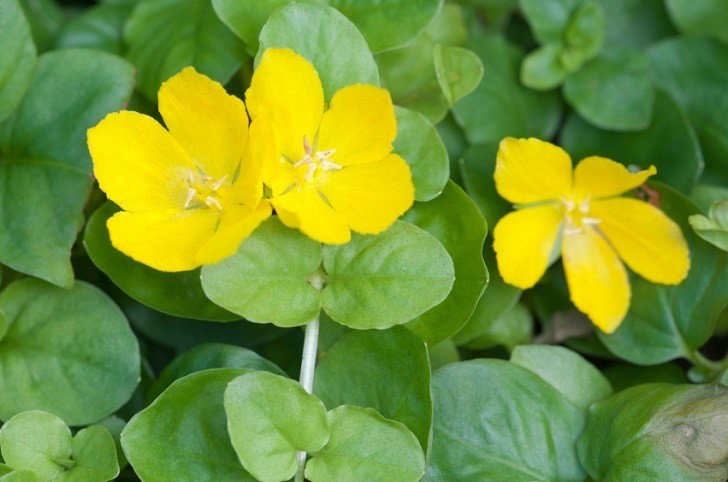
With a common name like ‘creeping jenny’, it would be safe to assume that is plant likes to move!
The rounded leaves along expansive, reaching stems make for an attractive ground cover and flower basket accent. Native to Europe, it is considered an invasive species in the US because of its propensity for crowding out native plants.
Though it is easily pulled from the ground, creeping jenny is better suited for containers or as a lawn replacement.
Garden Divas
Commanding the utmost of attention and care, high-maintenance plants will throw a ton of attitude your way if you can’t keep up with their demands.
Instead of wringing your hands over these prima donnas, perhaps it’s best to plant some laid back blooms.
9. Roses (Rosa spp.)
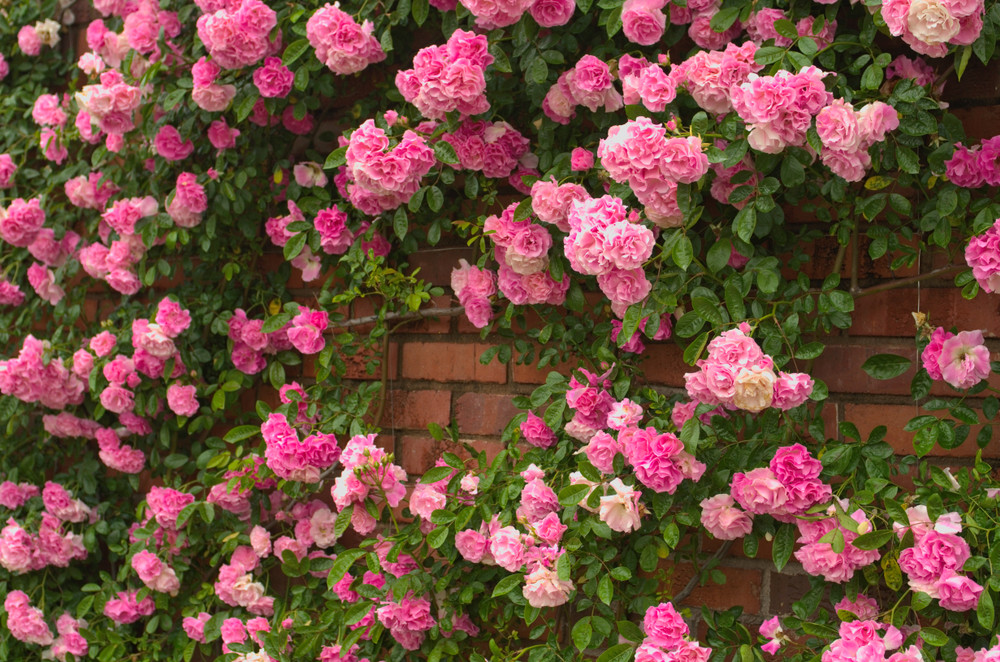
Though exquisite to behold and superbly fragrant, all types of rose shrubs are finicky and need lots of pampering.
For flawless blooms, you’ll have to ensure the soil is deep, loose, and enriched with compost, properly plan and space your plants so roses receive good air flow, twice weekly waterings and frequent feedings, regular pruning and deadheading (watch those thorns!), as well as the everlasting challenge of preventing black spots and protecting them from aphids, spider mites, and deer.
10. Gardenias (Gardenia jasminoides)
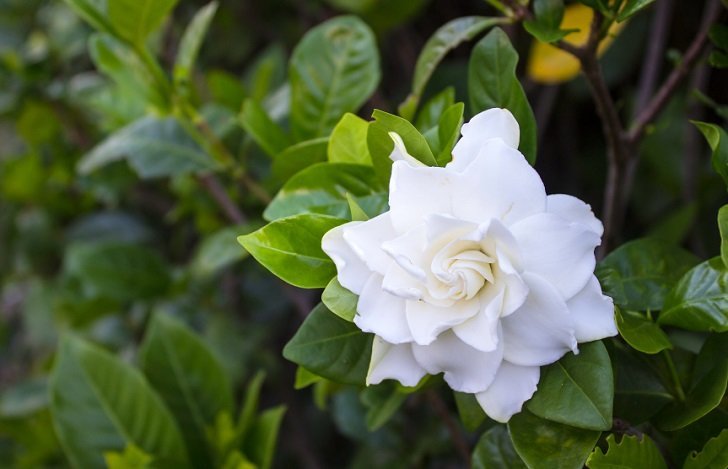
Terribly temperamental, gardenias require a perfect harmony of watering, sunlight, humidity, feeding, pruning, and mulching in order to glimpse those showy white flowers come summer.
Neglect just one or two of gardenia’s needs and the whole plant will suffer.
11. Dahlias (Dahlias spp.)
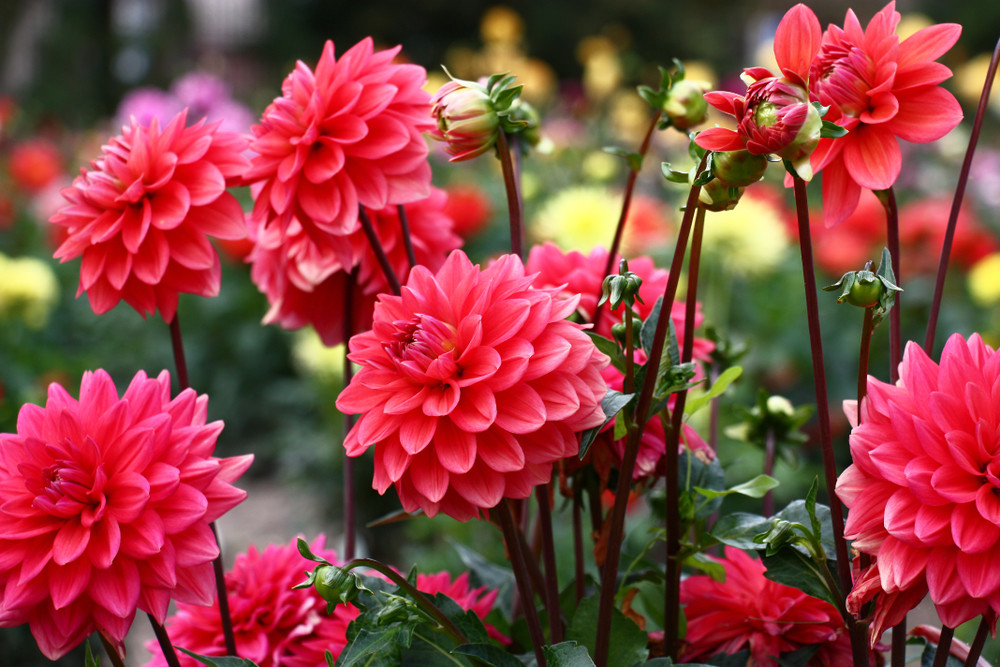
Adding a touch of colorful cheer to the garden, dahlias vary from teeny half inch pom-poms to enormous 10-inch “dinner plates”.
Aside from the usual routine of watering and feeding, dahlias are prone to powdery mildew, botrytis blight, viral diseases, and tuber rot. Gardeners will also need to exercise much vigilance when combatting aphids and thrips, often requiring pesticides to be applied every week to avoid infestations.
Prolonging blooms means lots of deadheading and as dahlias grow and become massive they will need to be supported by stakes to prevent their succulent stems from snapping in half.
Pin This To Save For Later
